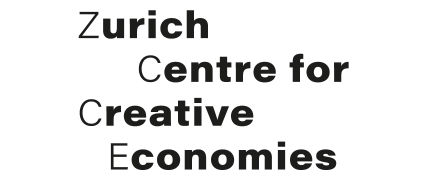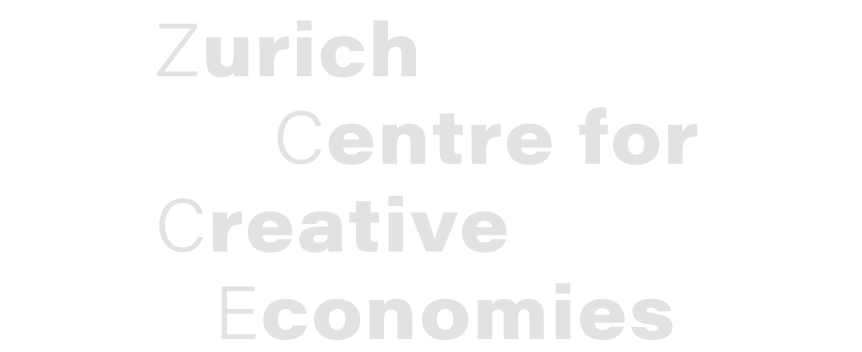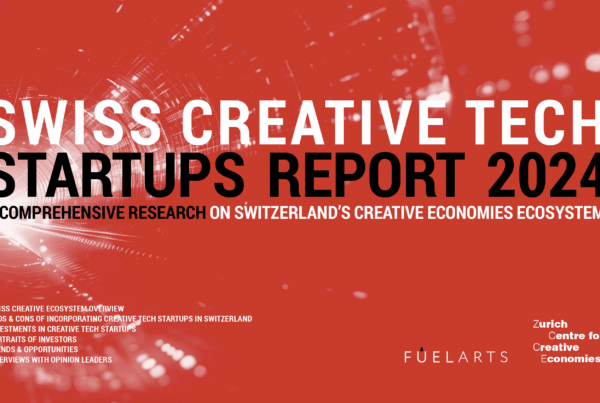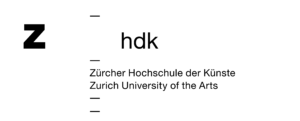A review of the book Russia Today, un média au service de l’État russe, written by Maxime Audinet.
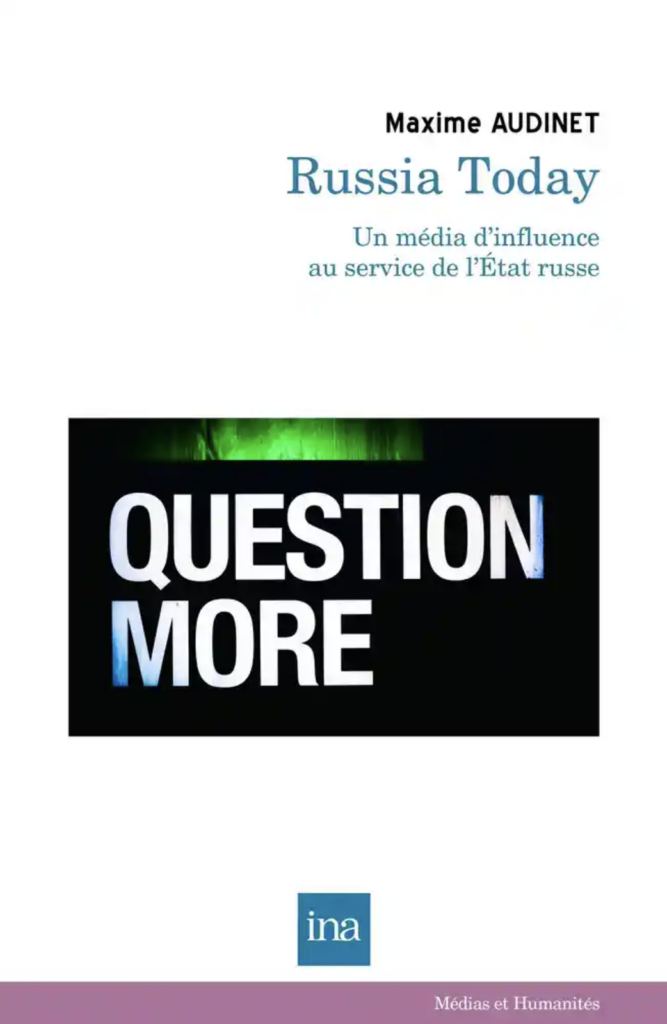
Today, with the war in Ukraine, RT has found itself under European sanctions, and many personalities linked to this structure, such as Margarita Simonian, are under international sanctions. In this 2021 book, written before the 2022’s war, Audinet attempts to tell the story of this alternative international media, created in the offices of the Kremlin to show the world “Russia’s point of view”, first on the
model of a CNN or BBC, then as a real tool in the service of Russian diplomacy. The analysis of this media empire is based on interviews with RT journalists, historians, political scientists, and specialists in Russian issues, as well as on statistical data.
The book is divided into four thematic sections, analyzing four different aspects of the RT empire.
In the first part, Maxime Audinet explains why Russia Today was created in the first place.
Conceived in the presidential administration by people close to Putin, such as Lessine and Gromov, the
idea was to create a media outlet capable of putting Russia on the world media map, like a BBC or CNN,
with news from Russia and a Russian viewpoint on events. The aim is first and foremost to raise Russia’s
profile around the world, because as Vsevolod Poulya pointed out in remarks made in 2017 and reported
by Audinet, Russia was an under-reported country. According to Simonyan, the head of RT, it was
important to occupy “a niche of news from Russia”. So, from 2005, the year it was founded, Russia
Today channels broadcast programs highlighting cultural heritage, or the 1945 Victory, from a Russian
point of view, without self-criticism. However, this did not help audiences to take off, and the real
turning point in the media’s future was the war in Georgia in 2008. Positioning itself as an alternative to
the coverage of Western media such as CNN and BBC, Russia Today took a stand against the Georgian
government and asserted its anti-mainstream character, which would henceforth become its trademark.
While between 2005 and 2008, the Russian point of view was brought to bear defensively, 2008 saw the
start of an offensive strategy, with Russia Today becoming a tool of Russian diplomacy in the
information war it is waging against the so-called traditional media. From then on, Russia Today became
RT in 2009, and 90% of the information it carried had nothing to do with Russia. Receiving considerable
funding from the Russian government, RT invests in the creation of a wide variety of broadcasting
channels, in English, Arabic, Spanish, French and German, on television, but also and above all on social
networks. Other channels are also being developed, such as a documentary channel specializing in
coverage of various conflicts around the globe, and a video-on-demand channel. Social issues such as
the Gilets Jaunes are becoming recurring themes of coverage, while Russian social issues such as
Navalny’s poisoning will be omitted. Benefiting from a considerable comparative advantage in terms of
funding, RT doesn’t hesitate to use paid referencing on social networks, becoming increasingly popular
and more visible. So, from a simple instrument of soft power, RT has become a veritable tool in the
service of Russian diplomacy in the information war.
The creation of this vast media network is based on characters that the author describes in the
second part of the book. Here, the personality of Margarita Simonian is central. A native of Krasnodar,
she has had a varied career, studying in the United States before gaining a degree in journalism at the
University of Kuban (Russia). She distinguished herself as a war reporter in Chechnya, in the North
Caucasus, which enabled her to reach the presidential pool and make a name for herself in the upper
echelons of power. Noticed by Gromov, with whom she had a very good relationship, he offered her
the head of his Russia Today project. From a personal point of view, she stands out for her unwavering
loyalty to the Russian regime and Putin, supporting him in numerous appearances on television and
social networks.
She gained international notoriety during the Ukrainian crisis and above all the
attempts at Russian interference in the 2017 US elections, during which RT played a considerable role.
Decorated on numerous occasions in the Kremlin by Putin, she declared at one of these ceremonies in
2019 “Sloujou Rossii” (I serve Russia). On the editorial side of RT itself, this attachment to the Russian
line is not as marked. Audinet sheds light on a network based on highly internationalized teams. While
news directors are mainly Russians with a passion for international relations, editorial writers are more
often locals, whom RT attracts either with high salaries, or through training courses such as the RT
School.
It’s important to note that adherence to Russian foreign policy is not a condition of access, but there is an automatic selection process, since working for RT has a certain connotation. As for presenters, they are always locals, so as not to disturb viewers, while certain headliners on flagship programs help to attract a wider audience. Like TV’s stars Larry King in the US or Frédéric Taddei in France, they’re not
necessarily adherents of Russian foreign policy, but their posture remains militant, anti-mainstream and
alternative, to match RT’s editorial line.
Over time, RT has increasingly asserted its anti-mainstream and alternative stance, making this
its own trademark. The channel’s slogan “Question More” illustrates this position. The idea is to compete
with the so-called mainstream media, such as BBC or CNN, by challenging their supposed objectivity
and offering an alternative opinion. RT’s entire editorial policy is based on the idea that there is a “pensée
unique” within the mainstream media, whether in the USA, France, or Germany, and that all the media
in these countries follow this thinking.
RT has set itself the goal of breaking this information monopoly,
by contributing its own point of view, complementing the information provided by the mainstream
media, as RT spokeswoman Anna Belkina points out. Audinet does not fail to make one fundamental
point: the positions taken are always aligned with those of Russian foreign policy, in what he calls the
permanent opposition of Russian elites to the liberal West. And this partiality remains totally assumed:
Simonian claims in her regular speeches that there is no such thing as journalistic objectivity, and
Western media that claim to achieve such objectivity are hypocrites. Anna Naouai, a former reporter for
RT International, said in 2014 that RT had nothing to hide, that everyone knows where RT’s funding
comes from, and that it’s normal for events to be shown from the Russian point of view.
By demonstrating that RT assumes this bias, Audinet explains how information is used by RT for
manipulative purposes. Considering that there is no single truth, and conceiving media space as a place
where different truths collide, RT invests this space on a massive scale, creating a veritable cacophony
and diluting information. An example of this technique is the coverage of the Navalny poisoning affair,
where on the same web page we find information on the poisoning, alongside content denying this thesis
or discrediting Navalny’s personality, accusing him of being a CIA agent. This dilution of information
is also marked by the desire to give everyone a voice, including conspiracy theorists such as the 9/11
Truth Movement, which denies the official version of the September 11th attacks.
As always, this coverage must not conflict with Russian policy, and to defend Russia’s interests, RT makes abundant use of the whataboutism technique, whether in response to critics accusing RT of lacking objectivity due to its state funding, or in political issues, such as Crimea compared to Kosovo, highlighting the existence of supposed double standards. A final technique used extensively by RT is satire and laughter, such as advertising campaigns openly stating that RT is the megaphone of propaganda, that the Russians are responsible for all the evils on earth, or a clip in which Simonian takes a suitcase of cash from a bear. All of this is aimed at dodging criticism, discrediting it, doing its own publicity, and increasing its audience.
Finally, in the fourth and last part, Audinet focuses on the notion of the Russian point of view
on the world. What does this supposed Russian point of view represent? The author highlights RT’s
main objective: to discredit the liberal West. In this sense, the aim is to highlight the high vulnerability
of these societies, by massively covering any conflicting events within them. At the institutional level,
the Brexit or the low turnout in the European elections are widely over-interpreted and dramatized, to
show the extent to which Western societies are in tension. On the demonstrations side, these obviously
don’t lack coverage: the “Manif pour Tous”, the demonstrations against the Labour Law or the Gilets
Jaunes. The aim is not to take a partisan stance, but to cover these demonstrations in a very theatrical
way, with immersive cameras and the writing of numerous articles with attractive titles.
Societal conflicts such as immigration and religion are also recurrent themes of coverage, as is the defense of sovereigntists and Eurosceptics, whether right or left. The aim is to highlight all the tensions present in Western societies, to show the world their hypocritical nature and discredit them. Of course, there is no shortage of arguments against the United States in this confrontation. Imperialism, partisan tensions, and the existence of a supposed deep state are widely highlighted, and naturally receive a large audience, whether in the United States itself; or in Latin America, where RT in Spanish rides this wave of struggle against American imperialism, a subject of tension in this region of the world. However, in all this, Audinet notes the almost total absence of Russia:
Russian societal issues are avoided, and RT broadcasts almost no information from within the country. And even when they do, the asymmetry in relation to coverage from abroad is staggering while only one article on RT France is devoted to the disaster that took place in the Chelyabinsk oblast in 2017, creating a radioactive cloud, fifteen articles are devoted to the Lubrizol fire in Rouen in 2019. The nature of the articles is also diametrically opposed: while those on Russia were intended to be reassuring, those on the Rouen fire were very anxiety-provoking. RT’s coverage in Russia focuses mainly on Russia’s foreign action, such as the Syrian or Ukrainian conflict, falling within RT’s initial paradigm: providing alternative information to the mainstream media, in line with the official Russian point of view.
Maxime Audinet’s book succeeds in presenting the RT system. He explains the evolution of RT
and its head, Margarita Simonian, in parallel with the evolution of Russian foreign policy. Whereas
before the conflict in Georgia in 2008, RT was defensive, aiming to promote Russia’s image
internationally, the war in Georgia marked a real turning point, with RT becoming a fully-fledged tool
in the hands of Russian diplomacy, in what they call information warfare. Audinet also highlights the
asymmetry in the treatment of international and Russian subjects, in both quantitative and qualitative
terms. However, the use of numerous interviews, particularly with RT employees, makes one thing clear:
like Russian employees, the possibility of a career at RT is not part of a desire to promote Kremlin
propaganda, but rather to make a career in an organization with a certain prestige, enabling them to work
internationally. Regarding editorial offices located outside Russian borders and employing foreign
journalists, Audinet clearly shows that these often have no connection with Russia, but are simply
attracted by the alternative, anti-mainstream aspect, giving a voice to all, including currents that could
be considered marginal, notably conspiracy currents. RT has thus succeeded in creating a vast global
network, enabling it to act in the interests of Russian diplomacy and wage this information war.
Despite the war in Ukraine, which began after this book was written, its content is not obsolete.
It helps us to understand the slow evolution of the Putin regime in international relations, through the
prism of RT, one of the main instruments of disinformation and the fight against the West.
Dilan Radjib
Maxime Audinet, RT, Un média d’influence au service de l’État russe, publisher : INA, 2021, 179
pages
